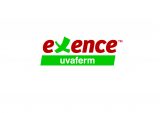The best natural anti-oxidant : Glutastar™. The specific inactivated yeast with guaranteed glutathione level
For an efficient protection against browning and aroma oxidation in white and rosé wines, a better aromatic expression, freshness, and a longer preservation of thiols and esters when added to the grapes or the must at the earliest stage in winemaking process, before the fermentation, Glutastar™ is the latest SIY to protect the wine from oxidation.
The addition of GLUTASTAR™ contributes not only to enhance aromatic intensity and persistency due to the release of a high level of stabilizing peptides, but also to increase mouthfeel perception and wine thickness due to the polysaccharides enrichment, both in white and rosé wines.
GLUTASTAR™ is the result of a research collaboration with the Institut Universitaire de la Vigne et du Vin de Dijon, France, that studied its efficiency via metabolomic approach. The combination of the original selected natural wine yeast and the optimized production process ensures the ability of GLUTASTAR™ to release the highest level of reduced glutathione and stabilizing peptides exhibiting a high free radical scavenging activity.
Lalvin ICV OKAY- for young, fresh and aromatic rose, white and red wines
Winemaker and market needs, especially for bulk early released wine, focus on regular aromatic profile and analytical characteristics such as volatile acidity, SO2, level, sulfur compounds, etc…
In order to respond to such demand, Lallemand and ICV have selected with collaboration of INRA and Sup’ Agro Montpellier, Lalvin ICV OKAY® for its special ability to avoid SO2 and negative sulfur compounds production, with the security to complete rapid alcoholic fermentation in a large range of winemaking conditions.
Moreover the low acetaldehyde production of Lalvin ICV OKAY® will be a good asset to stabilize most of wines with moderate SO2 level.
Adapted to fresh aromatic rose, white and red wines usually obtained in low temperature and NTU conditions, Lalvin ICV OKAY® produces very low level of volatile acidity.
Lalvin ICV OKAY® selection has been the aim of a PhD. related to Identification of a new mechanism responsible for the control of SO2 and H2S production.
UVAFERM EXENCE®: An explosion of aromas for white and rosé wines
In collaboration with the Institute for Wine Biotechnology in Stellenbosch, South Africa, Lallemand is proud to introduce Uvaferm Exence®, a new wine yeast obtained through natural crossing. Developed for such high aromatic-potential grape varietals as Sauvignon Blanc, this wine yeast unleashes an explosion of aromas. Uvaferm Exence® wine yeast has shown excellent results with grape varietals for white and rosé wines that are highly aromatic or have high thiol potential. The resulting wine has a richly aromatic nose full of lively exotic and citrus fruit. The fruit is expressive, with a textured palate and real richness, depth and concentration of flavour. Many winery trials have shown a clear preference for wines fermented with Uvaferm Exence® compared to other thiol-releasing yeasts. For example, in trials carried out in France on Sauvignon Blanc, the results showed a significant impact on the revelation and conversion of volatile thiols, and therefore on the levels of 3-MHA and, consequently, the citrus and passion fruit notes, as well as on the high levels of ethyl esters, bringing out a strong expression of fruity and floral notes, and high aromatic intensity. Other varietals fermented with this wine yeast, including Colombard, Grenache Blanc, Chardonnay, Grenache Gris and Verdejo, showed similar results, with high levels of aromatic compounds. Uvaferm Exence® is particularly well adapted for white and rosé wine fermentation conditions such as low temperature and low turbidity. Furthermore, this wine yeast is recognized for producing low final levels of volatile acidity and low levels of SO2.
MANNOLEES is a specific yeast mannoproteins preparation
Nowadays the consumer is demanding soft and round wines. A balance of sweetness, structure and astringency are key factors.
In that context and considering the potential of yeast contribution beyond alcoholic fermentation (including aging on lees), mannoproteins have been investigated and their impact on wine sweetness was validated. Moreover, mannoproteins contribute
to tartaric and proteic stability of wines.

